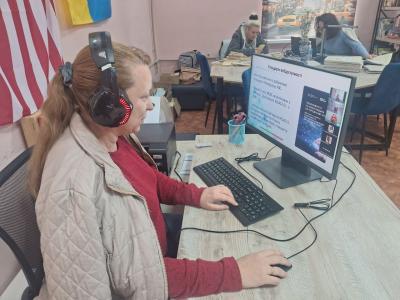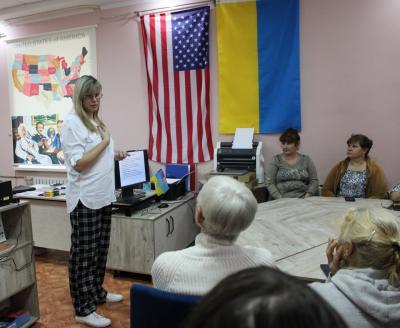Susan LaFlesche Picotte
Susan LaFlesche Picotte
First Native-American Woman Doctor
(1865-1915)
Susan LaFlesche Picotte lived all her life between two worlds: the vanishing world of the American Indian and the expanding world of white settlers in the American West. She realized that the way of white culture would replace that of her people, the native Americans. She felt compelled to serve as a bridge between both worlds. The best way to help her people, she decided, was to tend to their health, so this idealistic and determined young woman became the first Native-American woman doctor of Western medicine.
Susan LaFlesche was born on the Omaha Reservation in northeast¬ern Nebraska on June 17, 1865. Her family was very influential in the affairs of the Omaha people. Her father even served for a time as chief. He was the son of a French father and a Native-American mother who was either Ponca or Omaha. His western name was Joseph and his Indian name, Iron Eye. Iron Eye was adopted by Chief Big Elk of the Omaha and succeeded him as chief in 1853.
Susan's mother, Mary Gale, whose Omaha name was The One Woman, was also of mixed Native-American and European parents. She and Iron Eye had five children, four daughters and a son.
Iron Eye believed that the Omaha had to learn to live as the white people lived if they were to survive. He asked his people to give up their earth lodges and tipis for wooden houses. He encouraged them to take up farming, for the great herds of buffalo had been wiped out by white hunters.
Susan and the other LaFlesche children spoke their native Omaha language while growing up on the reservation. They also learned to speak excellent English, and all the children became leaders in the Omaha community.
When Susan was old enough, her parents sent her and her sister, Marguerite, to school at the Elizabeth Institute for Young Ladies in New Jersey. Susan's oldest sister, Susette, was already a graduate of the insti¬tute and had returned to teach at the reservation school.
In 1882, after three years in New Jersey, Susan returned to the reser¬vation and taught at a mission school. Now, as a young adult, she gained a deeper understanding of the problems confronting her people. They were having great difficulty making the switch from being a hunt¬ing people to being a farming people. They were suspicious of the U.S. government and its endless rules and regulations. Also, many Omaha were getting sick with new illnesses. We now know that the white set¬tlers carried germs to which the Native Americans never had been exposed. Their bodies had no immunity to these germs, so they became ill and many of them died. Susan also noticed that the white doctors brought in by the government did not seem to care for the sick Indians very well. During this time, the idea of becoming a doctor took root in Susan's mind.
First she needed more education. In 1884, she and Marguerite were awarded scholarships to the Hampton Institute in Virginia. This school had been established in 1868 for the newly freed black slaves and later also accepted Native Americans. Susan was a brilliant student. She won a gold medal for scholastic achievement and ranked second in her grad-uating class in 1886.
While still at Hampton, she applied to the Woman's Medical College of Pennsylvania. She had no problem getting in; however, she had no money for tuition. Help came from the Women's National Indian Association, which provided aid for the professional education of Native Americans. Susan graduated first in her class of thirty-six women, earning the M.D. degree in 1889. After interning at the Woman's Hospital of Philadelphia, she returned to the Omaha reserva¬tion as Dr. LaFlesche.
Dr. LaFlesche had pledged to devote her life to helping the Omaha. She soon found out how difficult that would be. There were more than twelve hundred people living on the reservation, and she was the only doctor. When a message came that someone was sick or dying, Dr. LaFlesche had to travel to the patient on horseback or by horse and buggy, no matter what the weather. With her bags of instruments and medicines tied to the saddle, she faced bitter winter winds and deep snow drifts. In the summer, she endured the blazing sun and scorching temperatures of the Great Plains.
After four years of working twelve to fourteen hours a day, her health gave out. She began to suffer earaches and facial pains brought on by hours of travel and exposure to the biting winter cold. She no longer could carry this enormous burden alone, and was forced to resign.
The next year, she did something that surprised her friends and family — she got married. Dr. LaFlesche always had said she never would marry because she was a doctor and needed to serve her people. But she changed her mind after meeting Henry Picotte, who was half Sioux and half French. After they married in 1894, they moved to the town of Bancroft, also on the reservation. Henry farmed and Susan practiced medicine. They had two sons.
In Bancroft, Dr. Susan LaFlesche Picotte treated whites as well as Omahas. She became more than just a physician to her people. She was an interpreter and adviser and was active in church and community affairs.
Dr. Picotte's concern became increasingly focused on one particular problem: alcoholism. Unscrupulous white traders were selling alcohol to the Omaha. They even distributed samples to young children. Many adults, disheartened by the loss of traditional ways and values and dis¬couraged about their attempts to fit into the white people's world, found escape in alcohol. Alcoholism became a severe problem among the Omaha.
Dr. Picotte struggled tirelessly against it. When she saw patients, she tried to educate them about the dangers of drinking too much. She was successful in having the sale of liquor prohibited on certain areas of the reservation, but she did not succeed in keeping the problem out of her own home. Her husband died of an alcohol-related illness in 1905.
Now a widow with two young boys, Dr. Picotte moved to the new reservation town of Walthill. Soon she was deeply involved in her new community, acting as doctor, nurse, and financial adviser. She helped organize the county medical society and headed the local board of health. She fought for the rights of her people, writing letters and visiting Washington, D.C. She even was appointed a missionary by the Presbyterian Church.
As a missionary, she set a new goal for herself: establishing a hospi¬tal on the reservation. She was able to raise ten thousand dollars from whites and Indians in the area. Under the authority of the Presbyterian Board of Home Missions, she opened the hospital at Walthill in 1913.
Dr. Picotte was head of the hospital for the rest of her life, which, unfortunately, was only two more years. She had suffered pain in her face since the days when she rode on horseback through snow and cold to call on patients. In early 1915, she had operations on her facial bones, but the surgery was not successful. She died on September 15, 1915 at the age of fifty.
More detailed information can be found in the "Extraordinary Women of Medicine" Darlene R.Stille, and issued by The Children's Press in the USA.
Information should be used just for educational purposes.











Коментарі